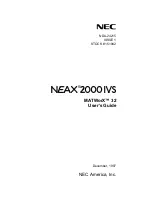
Setting the Processing Parameters
175
❚❘❘
naires, windows, and openings) and indirect light
sources (surfaces).
Direct Source Subdivision Accuracy
The energy contribution of a point light source to a
receiving target (a receiver mesh vertex) is directly
proportional to the luminous intensity (brightness)
of the source in the direction of the target and
inversely proportional to the square of its distance
from the target.
For linear and area light sources, the direction and
distance from the receiving target change across the
source. If the target is far from the source, the source
can be treated as a point source without introducing
any significant errors in the computations. However,
if the target is close to the source with respect to the
size of the source, then treating linear and area
sources as point lights would lead to inaccurate
results.
To prevent this problem, Lightscape subdivides the
source so that each resulting piece is small when
viewed from the mesh vertex. This subdivision
process is similar to that of the receiver mesh but is
less intuitive because the system cannot let you visu-
alize it. Furthermore, the source subdivision can
change for every receiving target since it depends on
the distance between the two.
You control the accuracy of the computed light
transfer from a linear or area source to the receiving
target with the Direct Source Subdivision Accuracy
parameter. The value of this parameter determines
the likelihood that Lightscape will subdivide the
source. When you set the parameter to 0, the system
never subdivides these sources. As you increase its
value towards 1, the subdivision is triggered more
easily and for more distant targets.
This parameter does not affect point sources or
natural lighting, except for window/opening sources
in interior models.
If the value of the Direct Source Subdivision Accu-
racy parameter is too low, illumination from an area
light may look like that caused by a point light, or
even by a grid of point lights. If its value is too high,
the accuracy of the calculation may be remarkable,
but the computation speed will be slower.
Direct Source Minimum Size
In certain geometrical configurations, such as when
an area source shines light onto an adjacent surface,
the subdivision criteria may break down the source
into too many regions.
The Direct Source Minimum Size parameter sets the
minimum value for generating the source subdivi-
sion region.
For most cases, setting this parameter to the same
value as the Receiver Minimum Mesh Spacing
produces good results. However, there may be times
when reducing the minimum size of the source is
necessary to prevent visual artifacts. For more infor-
mation, see “Reducing Meshing Artifacts” on page
187.
Indirect Source Minimum Size
Use Indirect Source Minimum Size to specify the
minimum possible size for secondary sources. It
works in the same way as the Direct Source
Minimum Size.
Summary of Contents for LIGHTSCAPE
Page 1: ...SULO 4 31 93 36034333308355 LJKWVFDSH...
Page 18: ...NOTES 10...
Page 110: ...NOTES 102...
Page 136: ...NOTES 128...
Page 166: ...NOTES 158...
Page 176: ...NOTES 168...
Page 202: ...NOTES 194...
Page 210: ...NOTES 202...
Page 248: ...NOTES 240...
Page 294: ...NOTES 286...
Page 308: ...NOTES 300...
Page 316: ...NOTES 308...
Page 324: ...NOTES 316...
Page 342: ...Glossary 334 Lightscape...
Page 360: ...Index ix 352 Lightscape...
Page 362: ......
















































